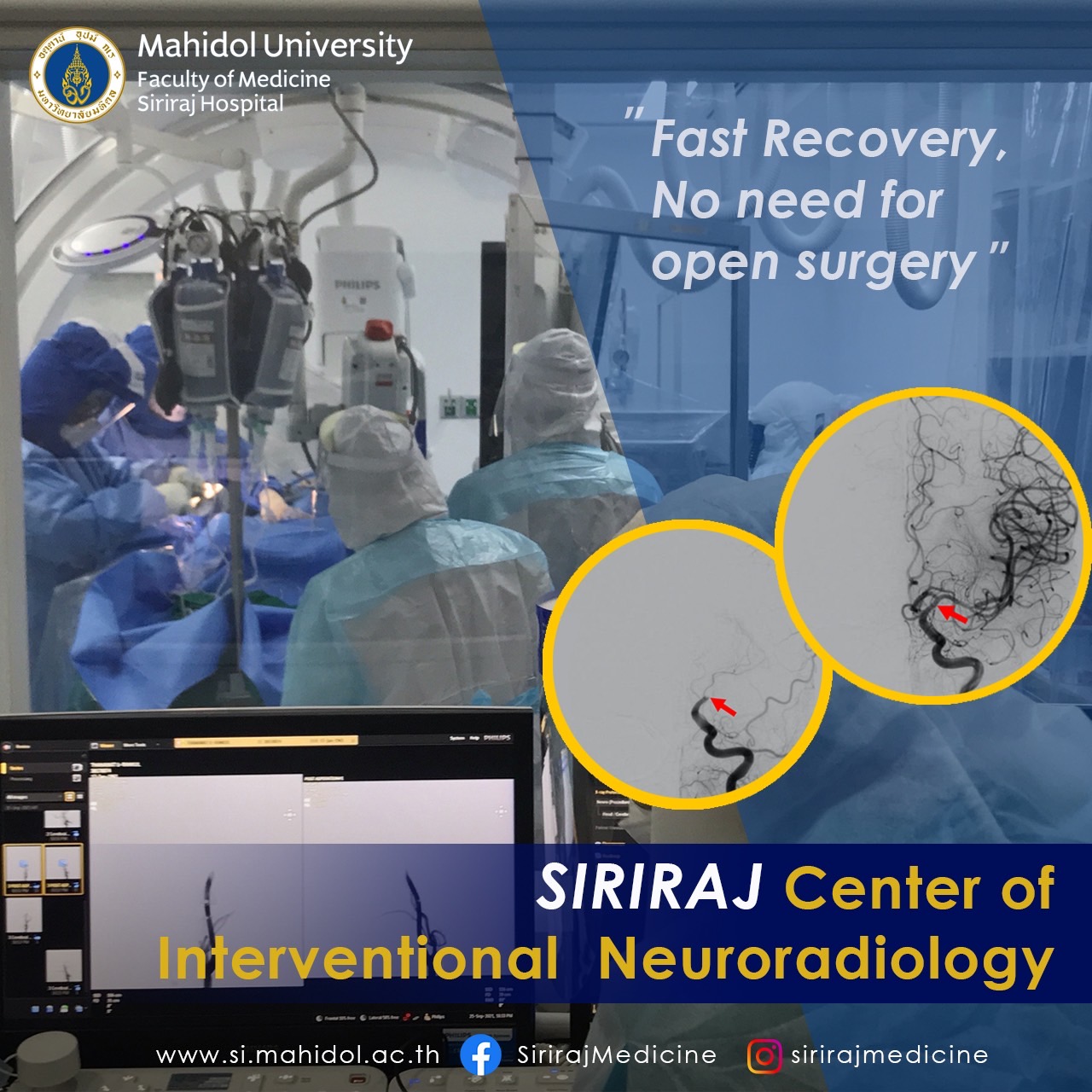What is Interventional Neuroradiology
Interventional Neuroradiology is a minimally invasive procedure using image-guiding techniques to insert a small tube or microcatheter, along with agents and devices, through a percutaneous route, usually at the groin area, in order to accomplish a wide variety of neurovascular conditions of the central nervous system, the head and neck region, the spine including vascular anomaly of whole body. Hence, this treatment technique diminishes the need for open surgery, leading to short hospital stays, fast recovery time, and decrease procedural risks.
The most common treatments in the practice of our dedicated experts
- Acute ischemic stroke by navigating clot retriever devices directly to the site of occlusion in the intracranial vessels, the so-called ”mechanical thrombectomy” procedure, which is also benefit in patients who have beyond golden period for intravenous thrombolytic treatment.
- Chronic stroke and/or TIA (transient ischemic attack) from carotid artery stenosis by deployment of the stent at the stenotic site.
- Intracranial aneurysms, both presenting with rupture and non-rupture, by endovascular deploying platinum coils through microcatheters into those aneurysmal sacs.
- Intracranial /intrathecal hemorrhage or other neurological symptoms resulting from arteriovenous malformations (AVMs) or dural arteriovenous fistular (DAVF), by delivering embolic materials to occlude those abnormal vessels.
- Traumatic vascular injury by direct intravascular closure precisely at the torn vessels by using proper embolic materials.
- Venous malformations of whole body by direct intralesional injection of sclerosing agents.


 Published
Published